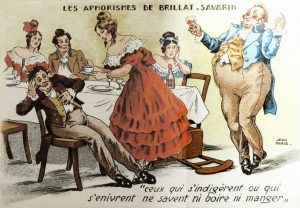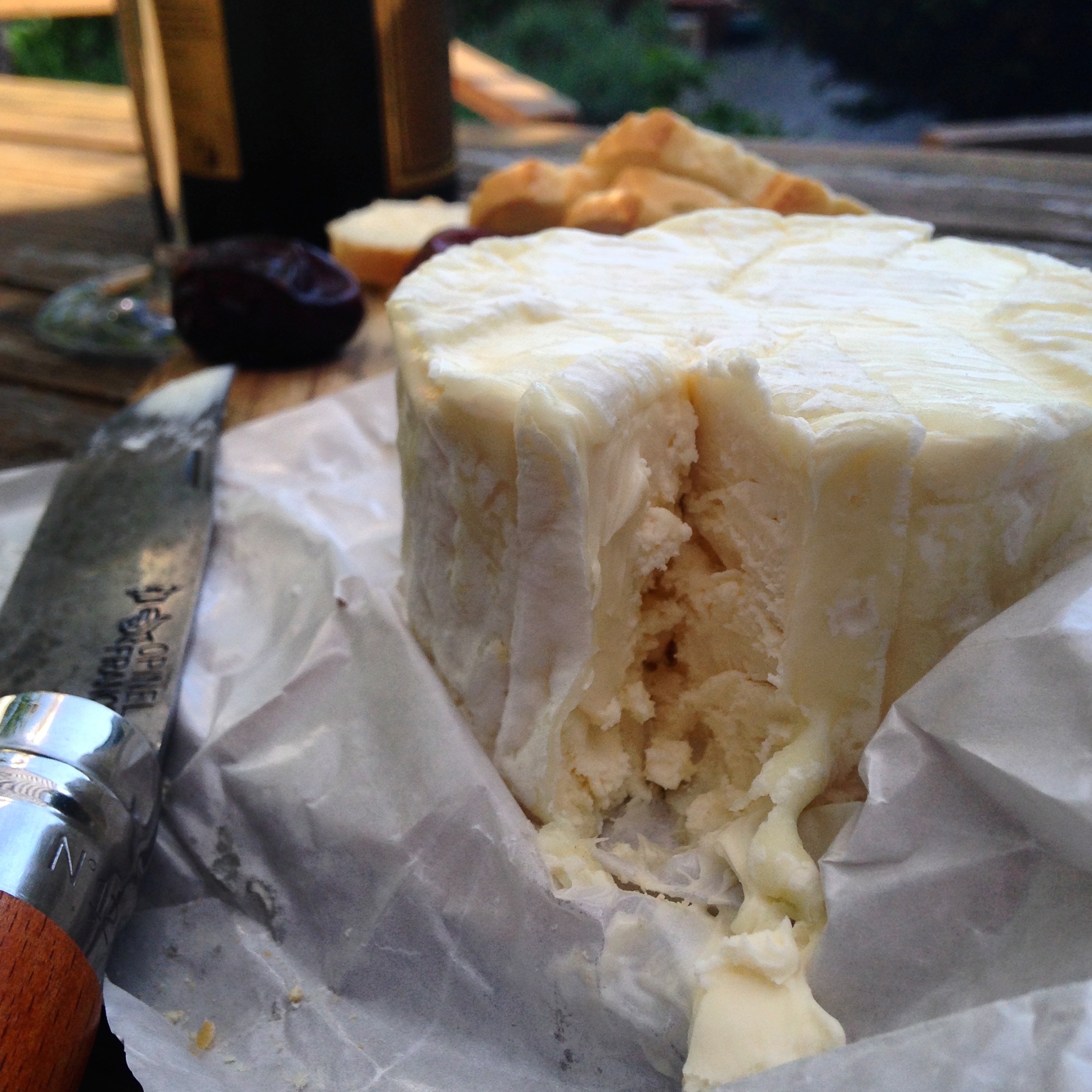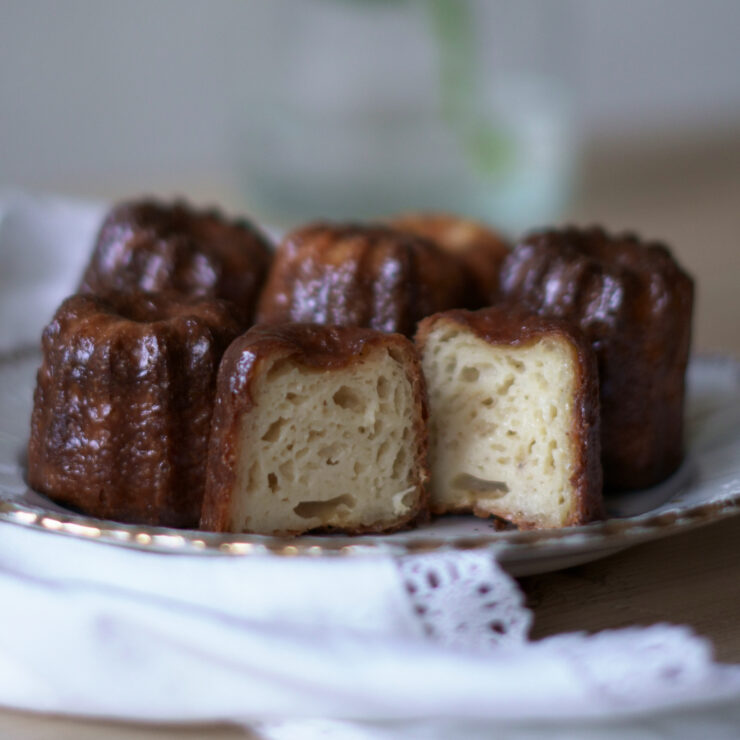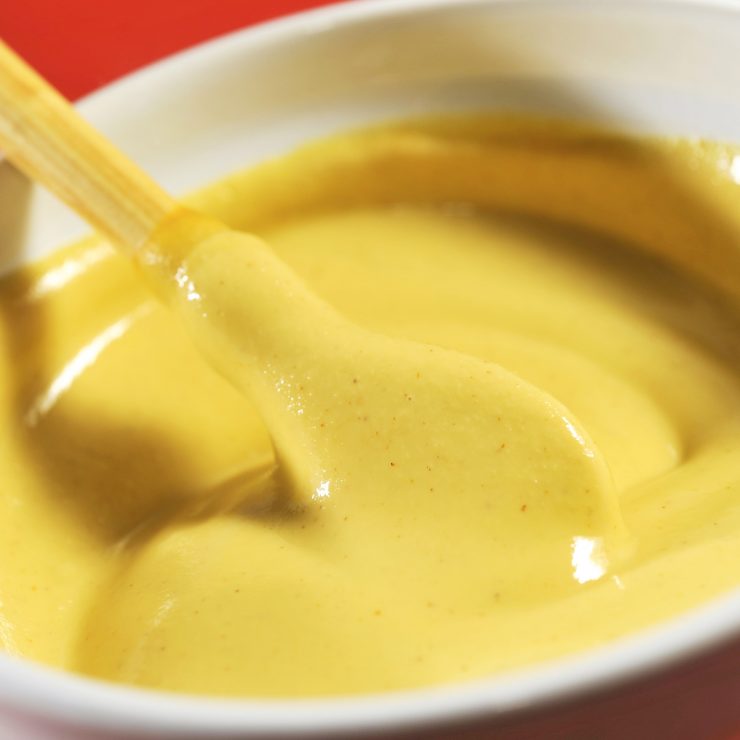Long before Atkins declared the war on carbs, Jean Anthelme Brillat-Savarin (1755-1826) had done exactly the same. Cheese, however, he truly loved.
CARBS!
Unfortunately, carbs have been deemed evil, just as fat was in the 1980s and 1990s. Too many carbs are said to make us obese, old, lazy and ill. Not exactly the best thought when standing on line to order my viennoiserie in France. Especially because I know I will also walk away with a baguette. And perhaps one of those pretty tartelettes with gleaming, bright red strawberries — for dessert, you know.
I can almost hear Brillat-Savarin shaming me, forcing me to step out of that line and make my way home. (PS: Not a chance.)
THE MAN WHO HATED THEM…
 In 1825, the respected lawyer, politician and gourmet (not ‘gourmand’, a ‘gourmand’ is someone who stuffs their face) published one of the most influential masterpieces in food history, a book by the name of Physiologie du goût (beautifully translated into English by American food writer and critic, M.F.K. Fisher in 1949. In the book, he explained the art of eating well and the effect food has on our bodies. Combining scientific evidence with aphorisms such as “Tell me what you eat and I’ll tell you who you are,” the book, which was published a few months before his death, was a huge success.
In 1825, the respected lawyer, politician and gourmet (not ‘gourmand’, a ‘gourmand’ is someone who stuffs their face) published one of the most influential masterpieces in food history, a book by the name of Physiologie du goût (beautifully translated into English by American food writer and critic, M.F.K. Fisher in 1949. In the book, he explained the art of eating well and the effect food has on our bodies. Combining scientific evidence with aphorisms such as “Tell me what you eat and I’ll tell you who you are,” the book, which was published a few months before his death, was a huge success.
Brillat-Savarin shamed carbohydrates, giving examples of people suffering from obesity who had indulged in foods such as potatoes, rice, bread and sugar. Ironically, the rum-drenched, carborific Gâteau Savarin was named after him!
AND THE CHEESE THAT WAS NAMED AFTER HIM!
 Understandably, however, one of the fattiest, richest French cheeses was also named after him. Brillat-Savarin loved cheese and proclaimed: “Un repas sans fromage est une belle à laquelle il manque un oeil” (A meal without cheese is like a beauty without an eye); “Le fromage est le complément d’un bon repas et le supplément d’un mauvais” (Cheese complements a good meal and supplements a bad one).
Understandably, however, one of the fattiest, richest French cheeses was also named after him. Brillat-Savarin loved cheese and proclaimed: “Un repas sans fromage est une belle à laquelle il manque un oeil” (A meal without cheese is like a beauty without an eye); “Le fromage est le complément d’un bon repas et le supplément d’un mauvais” (Cheese complements a good meal and supplements a bad one).
The history of Brillat-Savarin cheese, which has a fat content of roughly 75%, goes back to the 19th century. Back then it was called ‘Excelsior’ or ‘Délice des gourmets’ and was first made in Forges-les-Eaux in the Seine-Maritime, Normandy. In 1930, it was given its current name by Henri Androuët, a renowned Maître Fromager from Paris. Today, the cheese is not only produced in Normandy, but also in Île-de-France and Bourgogne.
When young, the white mould cheese (fromage à croûte fleurie) has a mildly acidic taste with hints of nuts and truffles. Ripe, it becomes saltier and more intense. It is a creamy – almost buttery – triple crème cheese, which means that cream and milk were added during production. Sometimes it is rightfully referred to as the ‘foie gras’ of cheeses.
In my opinion, it is definitely a cheese that demands to be enjoyed with bread, despite Monsieur Brillat-Savarin’s warnings, and the fear of carbs (which I will never understand).
On a final note, we should also take heed of what he wrote: “Les animaux se repaissent; l’homme mange. L’homme d’esprit seul sait manger.” (Animals feed, people eat. Only intelligent people know how to eat). In other words, taste, enjoy and relish everything in moderation. My advice exactly. And may I add that the cheese pairs beautifully with dates and a glass of Champagne?




